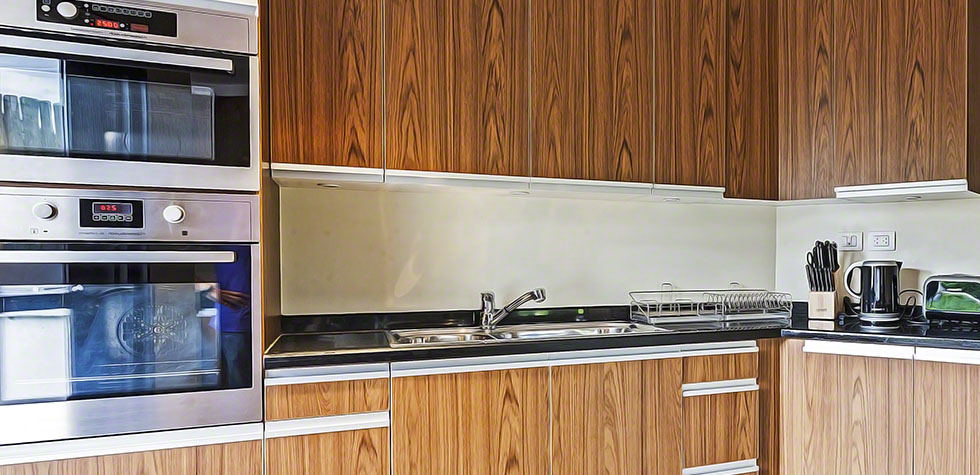Installing a kitchen countertop is a critical task that sets the tone for the entire kitchen. A well-installed countertop not only adds to the beauty and functionality of the space but also ensures longevity and durability. The process begins with accurate measurements. Ensuring that you or your professional installer take precise measurements of your kitchen space is crucial. It avoids potential problems during the installation process and ensures that the granite countertops fits perfectly.
Preparation is another significant aspect. The base cabinets need to be sturdy and level, as they will support the weight of the countertop. Any discrepancies here can lead to problems down the road, such as cracks or uneven surfaces. Moreover, it’s essential to consider the weight of the countertop material. Some stones, like granite, can be considerably heavy, requiring additional support.
The First Step: Proper Countertop Installation
While DIY installation might seem tempting, especially with the plethora of online resources available, it’s always advisable to consider professional installation for certain materials. Complexities can arise, and the expertise of a professional can ensure that the countertop is installed securely and correctly.
Maintaining Your Countertop: Regular Care and Cleaning
Once your beautiful new countertop is in place, the focus shifts to its care and maintenance. Regardless of the material, regular cleaning is a must. However, it’s essential to use the right cleaning agents. For most countertops, mild soap and warm water will suffice. Avoid using abrasive pads or harsh chemicals, as these can damage the surface of the countertop.
Natural stone countertops, like granite or marble, may require special care. These materials can be porous, making them vulnerable to staining. If you’ve chosen a natural stone countertop, consider applying a sealant. This protective layer can prevent stains and ensure that the stone retains its beauty. However, remember that resealing might be necessary over time.
For those with wooden or butcher block countertops, the maintenance regimen will differ. Regular oiling can keep the wood conditioned and prevent it from drying out or cracking. Again, the key is to use the right product. Food-safe mineral oils are typically recommended for this purpose.
Addressing Stains, Scratches, and Damages
Accidents happen, and even with the utmost care, countertops can sustain stains or scratches. For stains, it’s crucial to act fast. Blot (don’t wipe) spills immediately to prevent them from penetrating the surface, especially on porous materials.
Scratches, especially on surfaces like laminate or solid surface countertops, can sometimes be buffed out using a gentle abrasive pad. However, deeper scratches or chips might require professional intervention.
In the case of heat damage, especially on laminate or solid surface materials, always use trivets or heat pads. These countertops are not as heat-resistant as stone and can sustain burns or discoloration if hot pots and pans are placed directly on them.
Annual Check-ups
It’s a good practice to periodically check your countertops for signs of wear, damage, or areas that might need resealing. An annual “check-up” can go a long way in ensuring that small issues are caught early before they become significant problems.
The Impact of Climate on Countertop Care
Regions with high humidity or fluctuating temperatures can have unique effects on certain countertop materials. For instance, wood can expand or contract due to humidity levels, potentially leading to warping. In such climates, regular conditioning of wooden butcher block countertops becomes even more critical. On the other hand, stone countertops in sunny areas might experience fading if exposed to direct sunlight over prolonged periods. To counteract this, consider using window treatments to filter harsh sunlight or positioning your countertop away from direct exposure.
Aesthetics and Functionality
While the allure of a particular countertop material can be tempting, it’s essential to consider the practicality of your choice. Marble, for example, exudes elegance, but it’s more prone to staining than other stones. If your kitchen sees heavy use or you entertain frequently, it might be worth considering quartz or granite as a more resilient option. Similarly, while stainless steel gives a modern industrial vibe, it can show scratches more prominently than other materials. The key is understanding your lifestyle and usage patterns and making a choice that blends both beauty and function.
When to Consult a Professional?
Over time, wear and tear are inevitable, even with the best care. Some issues, like minor stains or superficial scratches, can be addressed at home. However, deep cracks, significant chipping, or stubborn stains might require a professional’s touch. Regularly inspect your countertop for signs of severe damage. If you notice areas that seem beyond simple DIY fixes, it’s best to consult with a countertop replacement NC company. They can provide guidance on whether a repair is possible or if replacement becomes necessary.
Upcoming Trends and Innovations
The world of kitchen countertops is ever-evolving, with new materials and designs emerging regularly. Materials like recycled glass are gaining popularity for their eco-friendly nature and unique aesthetics. Additionally, innovative treatments are being developed for traditional materials to enhance their durability and reduce maintenance needs. Staying updated with these trends can provide inspiration for future kitchen remodels and ensure that your space remains both modern and functional.
Understanding Undermount vs. Drop-in Sinks with Countertops
The type of sink you choose can have a significant impact on your countertop installation and subsequent maintenance. Undermount sinks provide a seamless look, as they’re installed beneath the countertop. This design ensures easier cleanup, as crumbs and spills can be wiped directly into the sink without any obstructions. However, the installation process is more detailed and requires a countertop material strong enough to support the sink’s weight, such as granite or quartz.
Drop-in sinks, on the other hand, are placed into a hole cut out of the countertop. They’re generally easier and cheaper to install but might collect debris around their edges, which can be a maintenance concern. It’s crucial to ensure the sealant around a drop-in sink remains intact to prevent water damage to the cabinetry below.
Blending Backsplashes with Countertop Designs
Backsplashes serve both a functional and aesthetic purpose in the kitchen. They protect the walls from spills and splatters and also provide an opportunity to enhance the kitchen’s design. When choosing a backsplash, consider how it will blend with your countertop. Some homeowners opt for a continuous material, extending the countertop material up the wall. Others prefer a contrasting look, selecting tiles or different materials that complement the countertop’s color and design. Proper installation is key, ensuring a tight seal where the backsplash and countertop meet to prevent water seepage.
Conclusion
Installing and maintaining a countertop requires a combination of precise initial work and ongoing care. With the right attention to detail during installation and a commitment to regular maintenance, homeowners can ensure that their countertops remain a beautiful and functional centerpiece in their kitchens for many years to come. For your ease, feel free to talk to different granite countertop installers Durham NC near your area.




